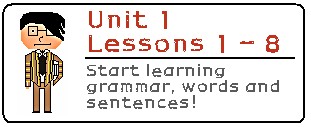Learning Korean can seem daunting, but with the right approach, it’s achievable for any beginner. This guide provides a structured path to start your Korean language journey, focusing on building a strong foundation in grammar, vocabulary, and sentence structure.
Building a Foundation: Grammar, Vocabulary, and Sentence Structure
The key to learning any language lies in mastering its fundamental building blocks. For Korean, this means focusing on grammar, building vocabulary, and understanding sentence structure. As a beginner, you’ll start with basic concepts and gradually expand your knowledge.
First Steps: Lessons 1-8
Your initial lessons (1-8) will introduce you to the core elements of Korean:
- Basic Sentence Structure: Understand the fundamental Subject-Object-Verb order in Korean sentences, differentiating it from English structure.
- Essential Grammar: Learn foundational grammar rules and conjugation techniques, enabling you to form simple sentences.
- Core Vocabulary: Begin building your vocabulary with everyday words and phrases, allowing you to engage in basic conversations.
- Irregular Verbs: Tackle the complexities of irregular verbs and their usage in sentences. Mastering these early will significantly benefit your progress.
These first eight lessons might be challenging, but they form the crucial bedrock for all future learning.
Expanding Your Knowledge: Lessons 9-16
Lessons 9-16 delve deeper into the intricacies of Korean:
- Korean Numbers: Learn the Korean number system, a vital aspect of daily communication. This includes counting objects, telling time, and understanding different number classifiers.
- Passive Verbs: Expand your grammar knowledge by understanding passive verbs and their application.
- Question Formation: Learn various ways to ask questions in Korean, enabling you to seek information and engage in more complex conversations.
- Advanced Grammar: Build upon the foundation laid in earlier lessons, exploring more complex grammar formations and expanding your sentence construction skills.
Mastering Connections: Lessons 17-25
The final lessons (17-25) in this introductory unit focus on connecting ideas and expressing nuances:
- Connecting Particles: Learn essential connecting particles (e.g., ~고, ~고 싶다, ~고 있다), which are crucial for linking clauses and creating more complex sentences. These particles add depth and meaning to your speech.
- Expressing Proficiency: Learn how to use 잘/못 to express proficiency or lack thereof in performing actions. This allows you to describe your abilities and experiences more accurately.
- Advanced Questioning: Further refine your ability to ask questions by exploring additional question words and sentence structures.
- Demonstrative Pronouns: Understand the usage of 이렇다, 그렇다, and 저렇다, which are essential for describing objects and situations.
Testing Your Knowledge
After completing these 25 lessons, a comprehensive Unit 1 Test will assess your understanding of the material covered. This test allows you to identify areas for improvement and reinforce your learning. Consistent practice and review are key to solidifying your newfound Korean language skills. This structured approach provides a strong foundation for your continued Korean language learning journey.
